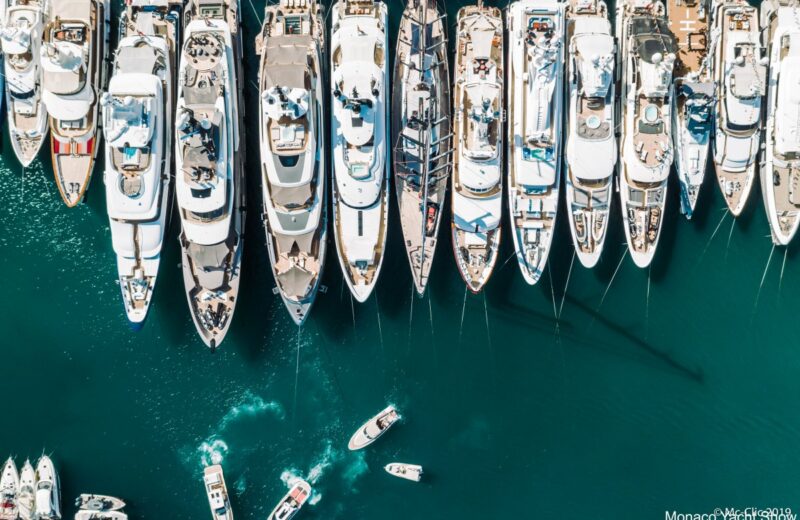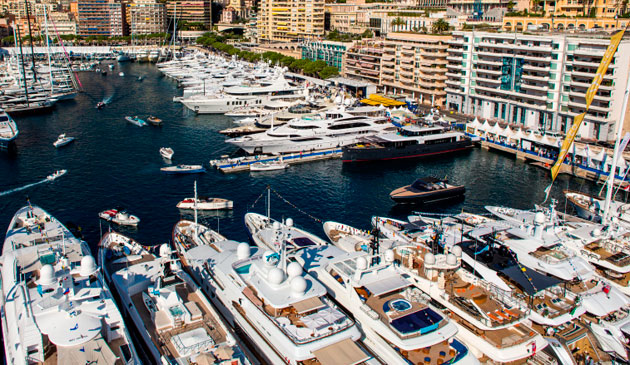Superyachts get greener: four top trends from the Monaco Yacht Show

The Monaco Yacht Show featured 125 vessels; the event’s biggest ever superyacht fleet.
The drive towards greener, more-sustainable, superyachts leads the list of four top trends characterising the luxury yachting sector, according to the organisers of the Monaco Yacht Show.
The other three trends linking luxury vessels on display at the show this week were: the move towards philanthropy, the growing importance of innovation and the rising popularity of explorer yachts.
“Sustainability has become a hot topic in the yachting world, with many superyachts developing innovative solutions to help reduce their environmental footprint,” noted the Monaco Yacht Show.
Examples of this trend included the 84-metre Savannah from Feadship and the 107-metre sailing yacht Black Pearl from Oceanco. Savannah was hailed as the first hybrid superyacht and is equipped with: a single engine, three generators and a combined total of about one megawatt-worth of batteries. Black Pearl uses special shaft generators, which create free electricity by allowing the propellers to turn when the yacht is under sail.
Fuel cells are also becoming more popular, with Italian shipyard VSY developing a concept powered by hydrogen fuel technology, together with designer Espen Oeino, Siemens and Lloyds Register.
Superyachts have a different operational profile to other marine vessels, averaging only about 300 hours per year. “They rarely sail at maximum speed, cruising at only 20% of their capacity on average,” said the show. “Statistics show that less than 0.3% of the world’s marine vessel CO2 emissions come from the thousands of superyachts afloat today.” But the luxury yacht industry is continuing to minimise its impact on the environment and the world’s oceans, said the show.
‘Thousands of superyachts afloat’
Industry leaders also launched Water Revolution Foundation, an independent non-profit organisation dedicated to neutralising the sector’s ecological footprint and helping to preserve the world’s oceans. The organisation is developing a database of sustainable technologies to encourage a culture of open-source sustainability. Under development is a software tool to measure the environmental impact of yacht-design concepts.
The top superyacht trend of sustainability also informs the second trend, which is the move towards philanthropy. Many superyacht owners are “increasingly concerned about the environmental health of the oceans” and regularly collect data for environmental organisations. This is facilitated by the International Seakeepers Society which connects owners with scientists, allowing them to use yachts as platforms for marine research. For example, the luxury yacht Archimedes was used recently for a shark research expedition near Antigua.
The colossal superyacht REV – which will become the world’s largest luxury vessel – will carry out scientific research worldwide, after its delivery by Norwegian shipbuilder Vard next year. Her Norwegian owner, Kjell Inge Røkke, has pledged to dedicate some of the yacht’s time to hosting 60 scientists and 30 crew on missions to research climate change, overfishing and plastic pollution.
World’s largest luxury vessel
Superyachts also help with disaster relief. The superyacht charity YachtAid Global was active last month in delivering first-responder assistance to the victims of Hurricane Dorian in the Bahamas.
Innovative superyacht design is third trend characterising the evolving luxury yacht industry. “From exhausts to engines, the design, manufacturing and engineering required on modern superyachts is uniquely complex,” said the show. “Many innovations come courtesy of the vision of a single owner, who is prepared to pay the price of investing in the future well before the wider market.”
This investment is said to have a ripple effect throughout local economies. The number of people employed in building a 65-metre yacht has been estimated at 350 by the International Superyacht Society. A study by Delft University of Technology revealed the construction of a superyacht can delivers 30-40 times the monetary value of a passenger ship or freighter.
The growing popularity of explorer yachts was the final trend identified by the Monaco Yacht Show.
“This particular breed of superyacht is designed to travel long distances in extreme conditions,” said the show. This category features reinforced hulls – sometimes of ice-class – more crew quarters, ecological waste units, and the ability to travel far at sustained speeds. Increasingly popular destinations include Antarctica, Raja Ampat in Papua New Guinea and the Arctic. Many explorer yachts carry submarines and helicopters to fully investigate the local environment.
The four top trends were compiled by the Monaco Yacht Show and the luxury yacht promotional organisation The Superyacht Life Foundation.
Meanwhile, this year’s event featured the show’s biggest ever fleet of superyachts – numbering 125 vessels; 44 of which were new designs.
Four top superyacht trends from the Monaco Yacht Show
- Superyachts become greener, as sustainability becomes more important
- The trend towards philanthropy
- Design innovation
- Rising popularity of explorer yachts.


